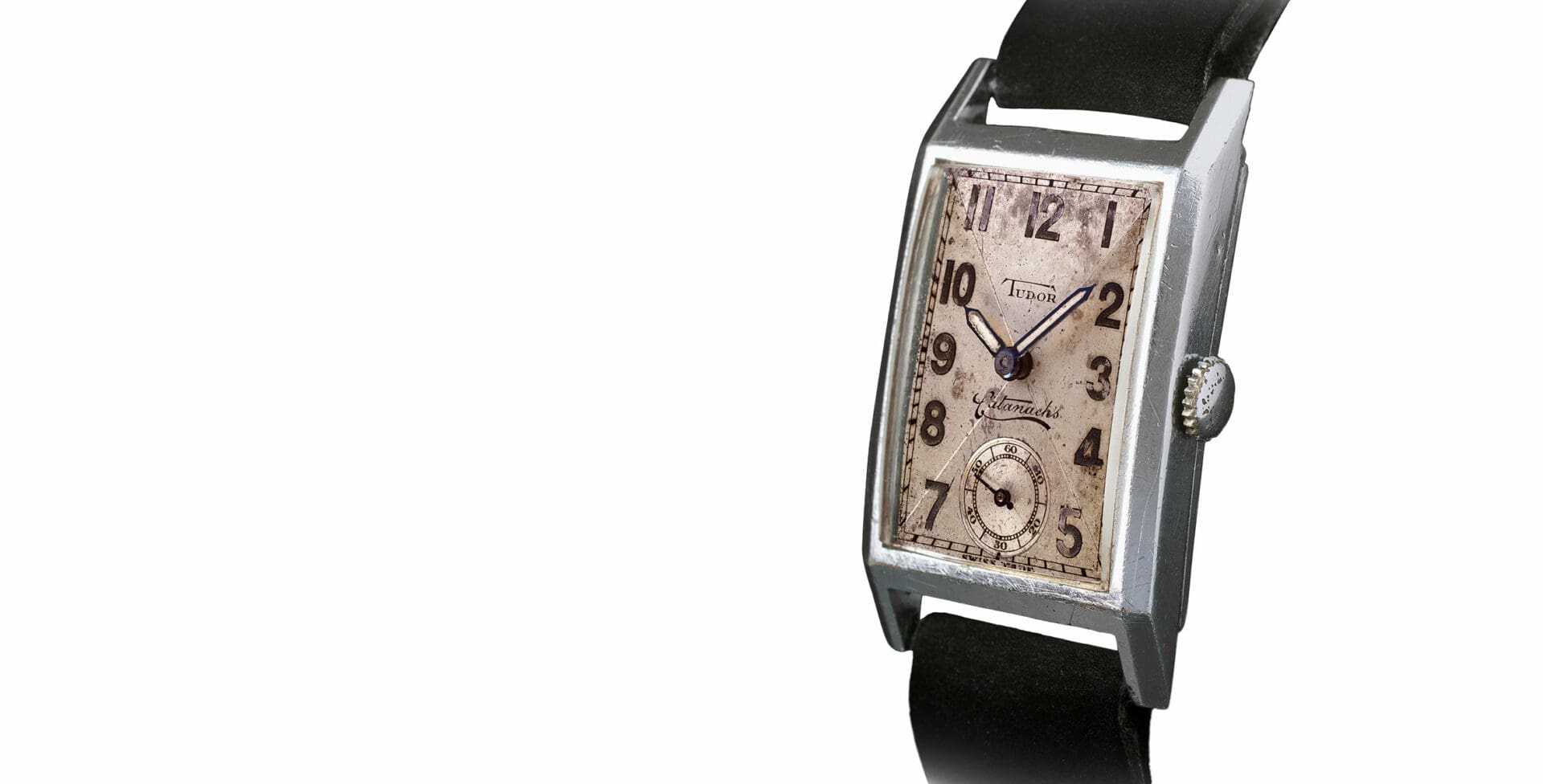The Australian History of Tudor Watches: An 83 year love affair
Felix ScholzWhile our American and English cousins have only recently rediscovered the joys of Tudor watches (re-launching in the American market in 2013 and the UK in 2014) Australia can stand proud in the knowledge that we’ve had been wearing watches emblazoned with the Tudor shield and Tudor rose for the last 83 years.
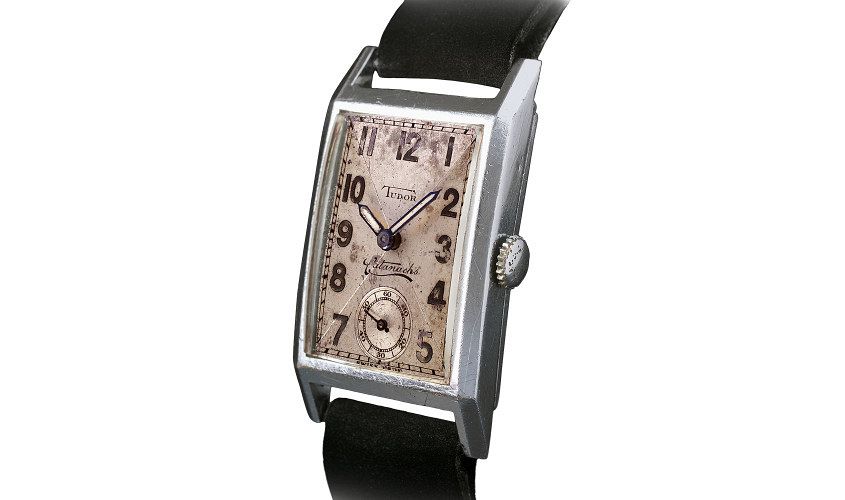
Tudor first came to Australia in 1932. History shows that it was was merely eight years after Hans Wilsdorf registered the trademark “The Tudor” in 1926. The Australian distributor was the jewelry firm Willis & Sons – who had been importing, wholesaling and manufacturing jewelry since 1858. While Australia in the ‘30s wasn’t the centre of the watchmaking world, we did have a pretty significant expertise and background in jewelry, thanks to the gold rush – so it’s not entirely surprising that we would be early adopters of a brand like Tudor, which offered a combination of quality and value that has proved perennially appealing to the Australian market.
As an interesting side note in Rolex history, the logo of Willis & Sons was a Unicorn – which I believe explains why ‘Unicorn’ branded watches (sometimes co-branded with Rolex) containing Rolex movements were around in the 1940s and ‘50s.
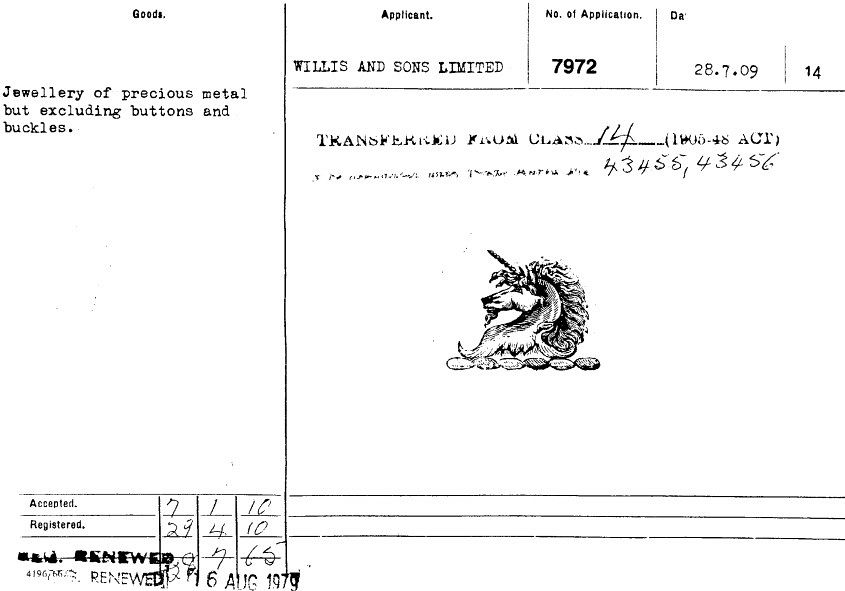
These watches were prominent in Australia, and it is likely that at least some of these Unicorn watches (which later existed with A. Schild movements) were cased by, or made specifically for the Australian market by Willis & Sons.
Early Tudor watches, like the “Catanach’s” branded piece above were simple affairs – with a manually wound movement and chromium plated cases. Yet already the proposition of reliable timepieces at an accessible price was clearly present. In the earlier days of the watch industry, there was less centralized control over how watches were sold, and it was common for prestigious jewelers like Catanach’s to co-brand watch dials. We spoke to David Catanach, a fifth generation jeweler about his family business relationship with Tudor. “In the ‘30s and ‘40s Catanach’s was a large scale, mainstream jeweler, with a shop on the corner of Little Collins St and the Royal Arcade in Melbourne. We sold a larger range then, including Tudor. I believe we liked them for their reliable mechanism. We still get them coming in for servicing occasionally.”
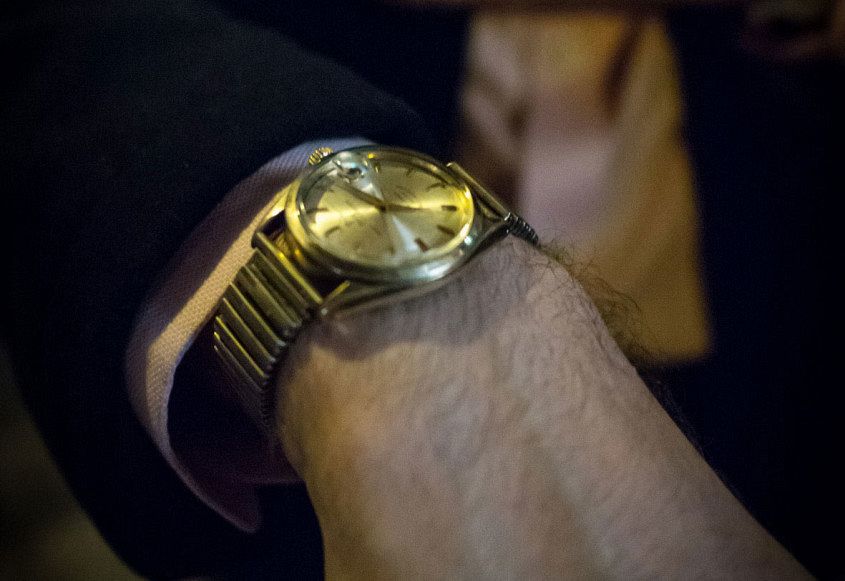
Even though servicing can’t hurt, apparently vintage Tudor watches do just fine without regular TLC too – Roman Serebrianiak is the proud owner of his grandfathers old Tudor – which has never been serviced and still keeps good time after 60 odd years of life.
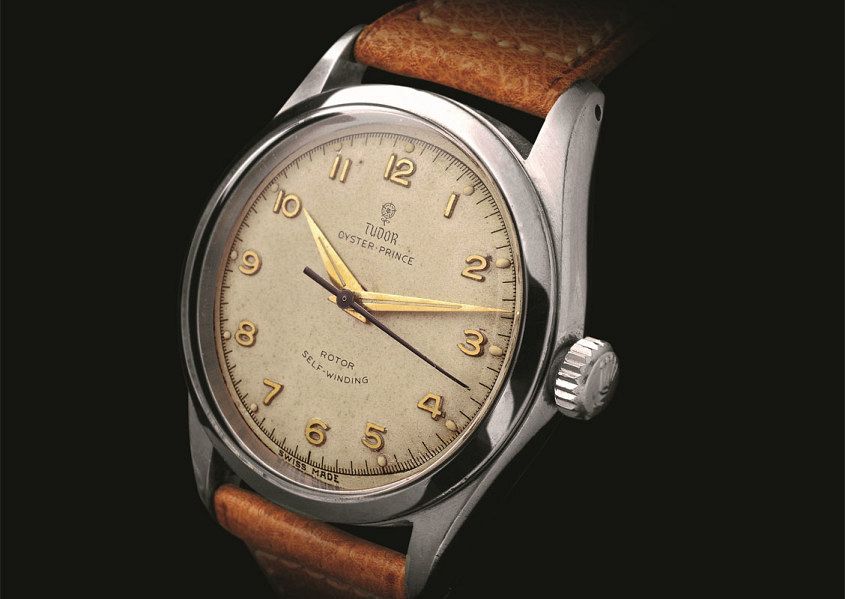
1946 marked the year Tudor became its own brand – so to speak. On the 6th of March, 1946 the company Montres Tudor SA was formed, providing Tudor watches with the reassuring backing of Rolex’s technical and design know-how, along with distribution and after sales service. It was after this point that the Tudor logo, which up until then had consisted of the Tudor shield and rose (representing strength and grace) became pared down to just the Tudor Rose. The shield wouldn’t reappear until 1969, in much the same form as it stands today.
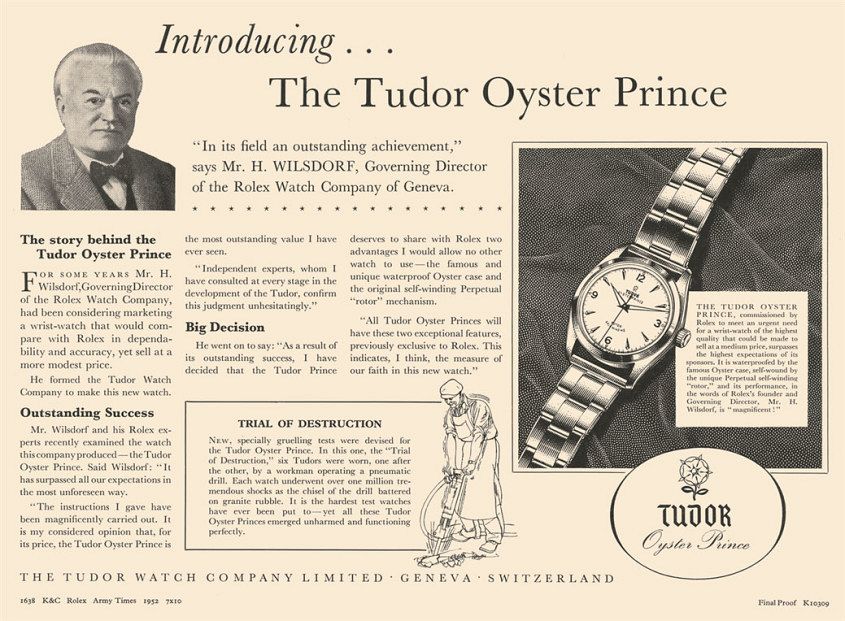
Sydney Jewellers J. Farren Price have been selling Tudor in Australia since 1948. Mr Julian Farren Price explained that the brand experienced a boom in the period between 1948 and 1952, due in no small part to the rapid growth of the post-war Australian economy, when life’s little luxuries like a reliable watch became a priority. 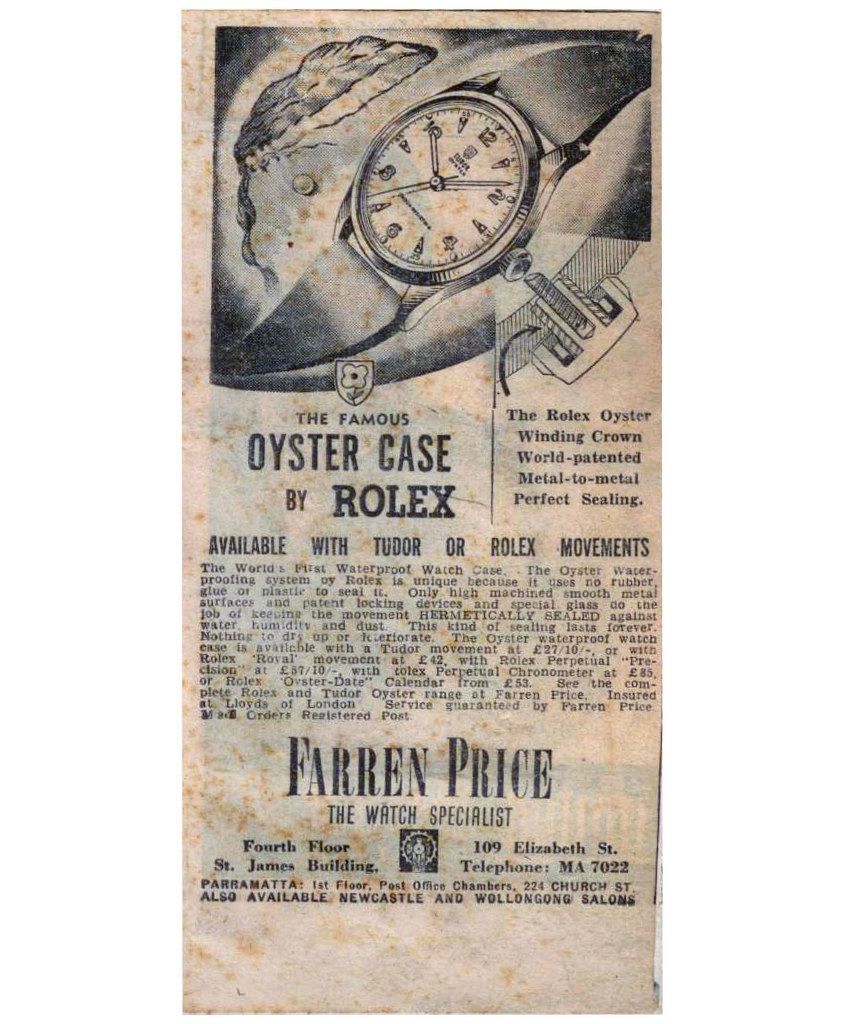
Sadly for water-loving Australians who were after a watch that could handle a dip, supply of Tudor watches dried up when Willis & Sons ceased importing them. And it wasn’t until some time in the 1970s when Rolex started distributing directly into Australia that new Tudor models reappeared on Australian wrists.
In this period Tudor was seen very much as the ‘little brother’ of Rolex, and it’s only recently that the brand has been aggressively forging its own unique identity, largely driven by the success of the Heritage line – which draws upon the brand’s rich history. While early models, like the Tudor Oyster Prince in the advertisement above were conservative and classic in design, newer models, such as the popular Black Bay Heritage (in both red and blue variants) with details like aged leather straps, high-quality fabric straps and the return of the vintage rose logo have allowed Tudor to break further from Rolex in terms of their actual brand positioning; offering a more youthful, energised alternative.
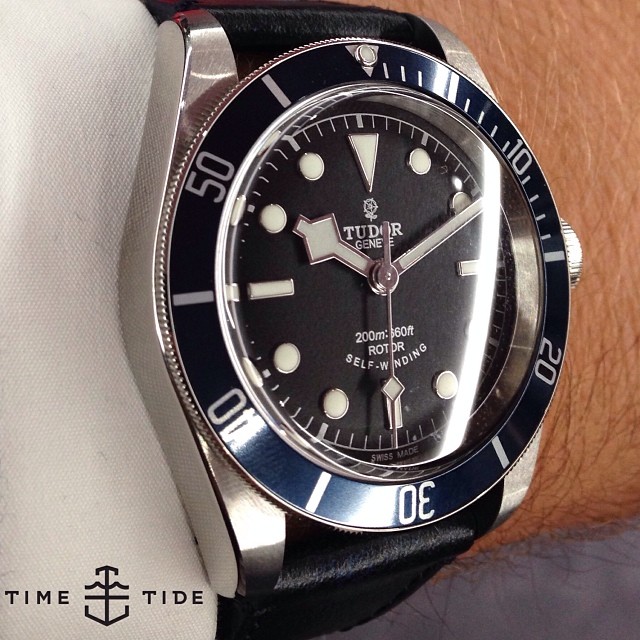
It’s good to see that even now, with the history of Tudor watches in Australia spanning 83 years, the brand still stands for reliability and quality of construction at a price that remains accessible. And with recent strong showings at Baselworld, there is now genuine anticipation and expectations for what they have in store at the world’s largest fair, only 6 weeks away.




